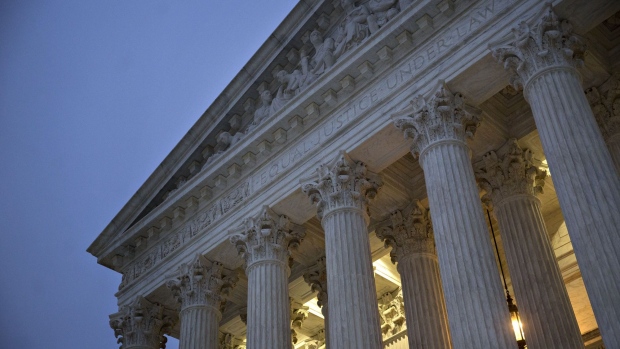Oct 3, 2022
Will the Supreme Court Restrict the Scope of the Clean Water Act?
, Bloomberg News

(Bloomberg) --
With so many crises going on in the world right now — Hurricane Ian, suspected sabotage of the Nord Stream pipeline, the war in Ukraine — it can be hard to keep your eye on the long ball.
But there is a hard, slow pitch headed toward the heart of the Clean Water Act, one of the most iconic and fundamental pieces of environmental legislation ever passed in the United States. The challenge comes in the form of Sackett v. Environmental Protection Agency, a case that will be heard by the Supreme Court on Monday, the first day of the court’s new term. The court’s decision will be announced next year.
The plaintiffs, Chantell and Michael Sackett, bought a parcel of land in Idaho 17 years ago and in 2007 started filling it with dirt and rock in preparation for building a house. The EPA ordered them to stop, saying the property was subject to the Clean Water Act and they needed a permit. When the agency demanded they restore the property to protect the watershed, the couple sued.
The case has wound through the courts since then. The Sacketts are represented by the conservative Pacific Legal Foundation and backed by a who’s who of industry groups, including the National Association of Home Builders and the American Petroleum Institute.
Environmental groups fear the new conservative supermajority on the court took up this case specifically to narrow the scope of the Clean Water Act — especially after its June decision in West Virginia v. EPA curbed the government’s authority to regulate power-plant emissions.
“The Sacketts’ case against the EPA is less about a lake house and more about a coordinated push by industrial polluters that want to blow a hole” in the law, said Sambhav Sankar, a senior vice president with Earthjustice, a legal advocacy group. Earthjustice filed an amicus brief for the government on behalf of 18 Indian tribes who say wetlands are integral to their cultures and resources. Wetlands are also a natural defense against climate change, storing copious amounts of carbon dioxide in their soil.
At issue in this case is nothing less than the definition of Waters of the United States (WOTUS). The Clean Water Act gives the federal government the right to regulate WOTUS against pollution and destruction. The Sacketts dispute that their lot is included in WOTUS. (“How can you call it a wetland when it’s a lot in an existing subdivision that has a sewer hookup?” Michael Sackett asked a Washington Post reporter in 2012.)
Since the hydrology in any watershed is interconnected, the EPA looks broadly at systems when it considers what to protect. That includes lakes and rivers and visible waters, of course, but also wetlands that appear seasonally and streams that flow only in spring before drying out in late summer. Some 60% of streams in the US are ephemeral, according to the the agency.
Conservatives and business groups have been pushing back on this definition of WOTUS since the law’s inception. They got a break in a 2006 case, Rapanos v. EPA. That case also involved a property owner filling in a wetland with gravel without a permit. The court ruled the law covered “navigable waters” and those with a “significant nexus” to navigable waters. This forced the EPA to conduct a four-year scientific review to define a “significant nexus.”
But critics of the law aren’t really interested in the science of hydrology. Conservatives see this as a property rights issue and an example of regulatory overreach, with “landowners nationwide … denied regulatory certainty with respect to the enjoyment of their property,” in the words of an amicus brief for the Sacketts filed by the libertarian Cato Institute. They want the narrowest definition of WOTUS possible, which would be navigable waters only.
When former President Trump came into office, his EPA ignored its own review and released a definition of WOTUS that no longer covered more than 50% of wetlands. A court vacated this and sent it back to the EPA again for another try.
Which brings us back to Sackett. The fact that SCOTUS took the case at all — especially as the EPA is in the process of rewriting guidance on “significant nexus” — is a bad sign for the government, says Sankar. If the court decides in favor of the Sacketts, some areas that were previously protected by the law, and the wildlife that relies on their waters, would be more vulnerable to development and pollution.
As the court hears arguments, Sankar said, “I’ll be watching to see whether the justices are paying any attention to the science of water protection, or whether the conservative justices in particular are more interested in simply drawing new lines on regulatory authority. If that is the case then the court would be saying essentially that it knows better than the EPA.”
©2022 Bloomberg L.P.






